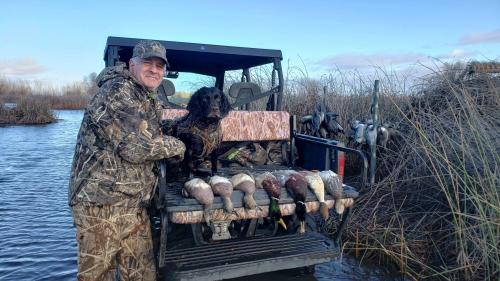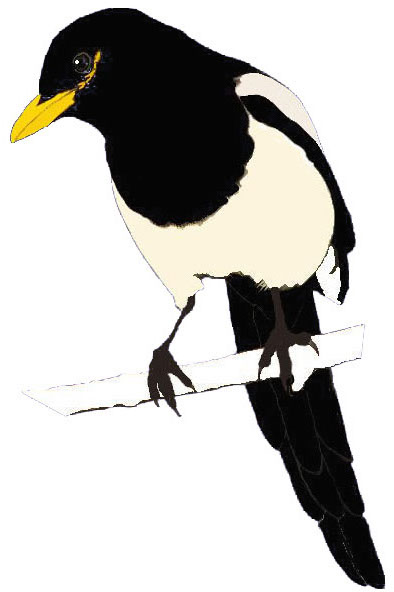Sacramento Valley Avian Surveys
Sacramento Valley Avian Surveys

The avian inventory of the Sacramento Valley is a privately funded research program led by the Museum of Wildlife and Fish Biology, UC Davis. Historic efforts, like the Grinnell Surveys launched by UC Berkley Museum of Vertebrate Zoology in the early 20th century, were done to build a biological inventory of birds in California. Unfortunately, these surveys overlooked the Sacramento Valley and its rich birdlife. John T. Emlen, Jr., UC Davis zoologist, noticed this gap as well, stating in 1940, “The Sacramento Valley is a large 'Blank' area on ornithological map, yet it is along one of the primary Pacific migration routes.” Andy Engilis recognized this continued omission of specimen-based surveys of the region and in 2017 launched an effort to address this deficiency.
The program’s goal is to establish a collection of birds that will set a 21st Century Avian Diversity Benchmark for the Sacramento Valley, with emphasis on private lands in the region. The program also provides a rare opportunity for private landowners to engage in biodiversity conservation and it will assess the value private lands play in conserving Sacramento Valley birdlife. The project is now in its fifth year and specimens are provided primarily through field collecting by MWFB zoologists, donations from various sources including private citizens and mosquito vector control districts, and wildlife refuges. For example, the Sacramento-Yolo County Mosquito Vector Control District, annually donates nearly 100 specimens per year of birds found dead by residents of both counties and that have tested negative for West Nile Virus. In addition to the voucher specimens, we also collect and maintain tissue samples for future genomic researchers. The broader impact of the Sacramento Avian Inventory Program is its direct support of teaching, providing experimental opportunities for undergraduate students both in class and as interns. “My favorite part of the program is working with students in the field”, said Curator Andrew Engilis. “This allows them to learn practical skills outside of class and gain hands-on research experience.”

The field component is nearing an end. We will continue to document species, but results will be based on the main work from 2017-2024. Initial results show that 225 species of birds have been documented in the Valley. “The legacy of this work will be for researchers 50-100 years from now that will have the historic specimens providing solid evidence of their occurrence during this era, and tissue samples for genomic assays,” said Engilis. This program has developed the largest modern research collection from California’s Central Valley. It also has helped to uncover some early 20th Century records that were overlooked by earlier researchers. The Museum is working to publish these historic accounts as part of this effort. Funding for this project have been provided by Bird Haven Ranch, Rancho Esquon, other private donors and California Department of Fish and Wildlife (through California Biodiversity Institute).
Publications
Arriaga, E.K. and A. Engilis, Jr. Regionally Important Egg Sets Collected by Donald L. Pinney in California’s Sacramento Valley, Including the First Documented Eggs from Four Species in the Region.
Russell, T. M., D. Fradet, P.M. Tatom, A. Engilis, Jr. First observations of Brown-headed Cowbird (Molothrus ater) parasitism of Black Phoebe (Sayornis nigricans) in the Sacramento Valley, California. Wilson Journal of Ornithology. 2024; Vol. 135: 582-589.
Engilis, Jr., A. Bird observations by Florence Anne (Sumner) Henderson from 1928-1937 in Elk Grove and Lodi, Central Valley, California. Central Valley Birds. 2022; Vol. 25: 112-130.
Engilis, Jr., A. Birds of the Central Valley: Introducing a publication series documenting the Central Valley's avian history and modern distributions. Central Valley Birds. 2021; Vol. 24: 33-42.
Duman, K., Dean, E., Williams, L. B., and Engilis, Jr., A. The flora of Bird Haven Ranch, Glenn County, California. Madroño. 2021; Vol 68, No.1: 23-38.
Dunford, C., Fogarty, F., Davis, J., Humphrey, J. M., Mangum, T., Saima-Barklow, V., and Engilis, Jr., A. Recent Expansion of the Breeding Range of Say’s Phoebe (Sayornis saya) in California’s Central Valley. Central Valley Birds. 2019; Vol. 22, No. 3: 45-59.
